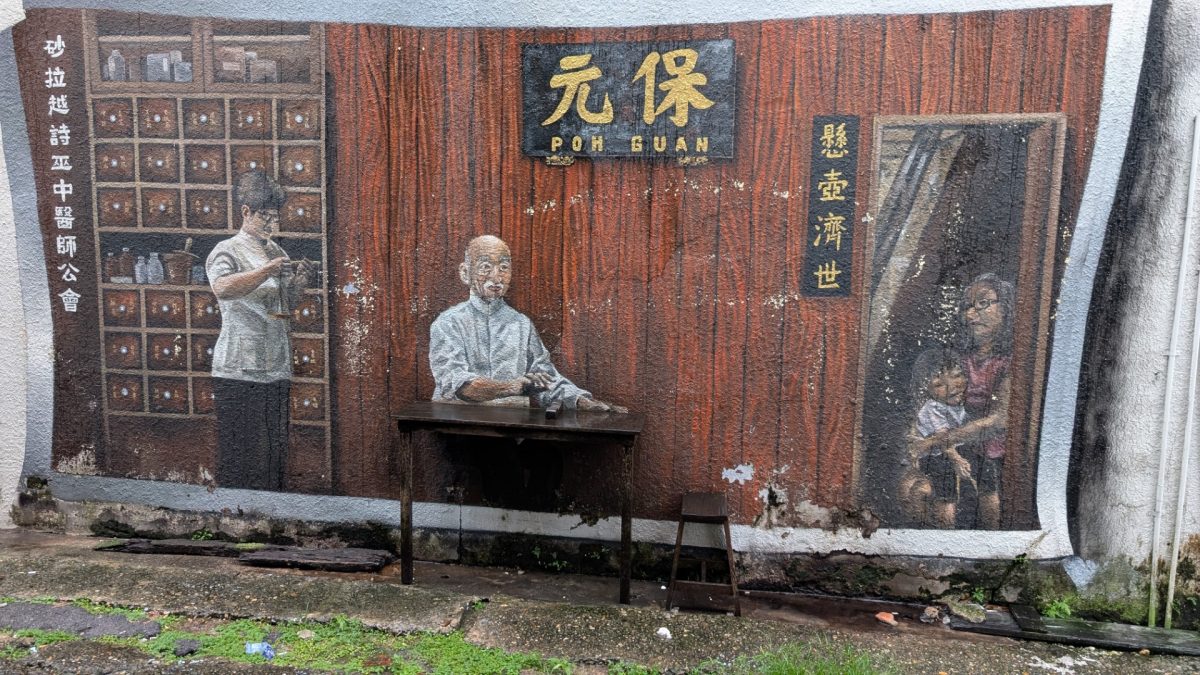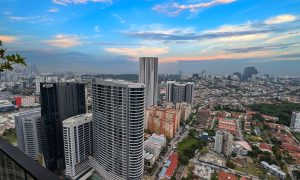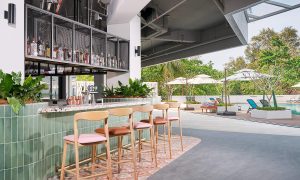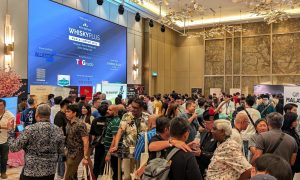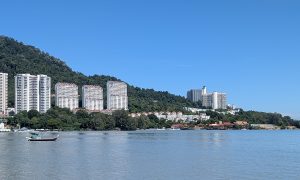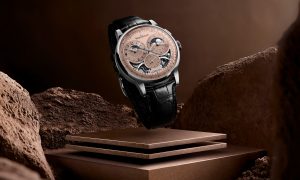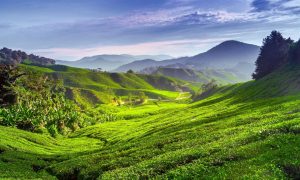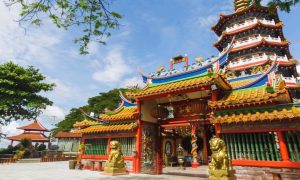Long known as a hardworking river port in central Sarawak, Sibu has a history shaped by fortune seekers, enterprising settlers, and the rhythm of Borneo’s longest river. Its heritage sets the stage for a destination that is far more intriguing than many first-time visitors expect.
“I’m going to Sibu for holiday,” I told several friends. “Oh, Cebu… nice. I’ve never been to the Philippines.” That, or something similar, was the response more than half the time. “No, not that Cebu. The Sibu in Sarawak.” Then the glazed look of confusion slowly washes over their face, and you can almost see the wheels spinning. “Sibu? For holiday? But why?”
In actual fact, this small city in Sarawak’s interior isn’t a destination that’s high on most travel lists, even within Malaysia. But after having been introduced to Sibu on a weeklong road trip earlier this year, I thought it might warrant a return for a longer visit. Batik Air had some impossible-to-resist attractive airfares, at least when we checked about two months in advance, and so we booked our flights, reserved a room at the Win Hotel, right next to the confluence of the Igan and Rajang Rivers, and started figuring out how we’d spend three nights in this admittedly fairly sleepy little city of just under 200,000 people.

Well, as is often the case, knowing a little bit about a destination always seems to lead to a better travel experience, at least for me. So I got online and began virtually exploring and learning Sibu’s backstory.
A RIVERINE HISTORY
Sibu’s story begins on the banks of the Rajang River, a waterway that has defined the town’s character for centuries. Long before modern roads carved their way through Sarawak, the Rajang served as the lifeline of the interior, carrying people, produce, and traditions between the coast and the upriver settlements. (For the geographically uninitiated, Sibu is roughly midway between Kuching in the west of Sarawak and Miri in the east. Sarawak is a big state – the largest in Malaysia, in fact, and nearly as big as all of Peninsular Malaysia – and so even today, it’s about five hours by car from Sibu to Kuching, and five hours as well to Miri.)
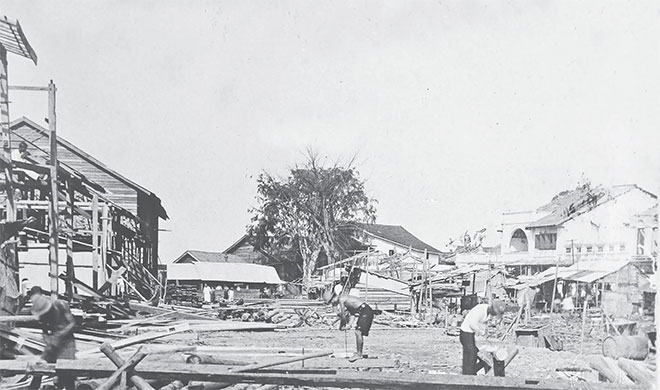
But once upon a time, it was all down to that mighty waterway, which is in fact at 565 km, is the longest river in Malaysia, just a few kilometres longer than Sabah’s Kinabatangan River. Early travellers described Sibu as a rough trading post where boats came and went on the Rajang at all hours, laden with jungle goods, sago, and timber. Though the modern skyline has grown (a bit) and changed over time, the river remains central to the town’s identity, reflecting a blend of old habits and new ambitions.
Early references to the settlement date back to the 19th century, when it was a quiet outpost under the rule of the Brooke dynasty. Before that, the area had been called Maling, named for the bend in the Rajang River which was known as Tanjung Maling. When the Brooke administration established the town, they changed the name to Sibau, which is believed to have come from the Iban word for the wild rambutan fruit (buah sibau) that proliferated in the area then. Over time, the word evolved into “Sibu,” both in everyday usage and in colonial records.

The arrival of Chinese settlers beginning in the 1860s, particularly the Fuzhou community invited by Charles Brooke, marked a turning point. These migrants brought new skills, strong work ethics, and farming techniques that helped transform the region’s economy. Their influence is still unmistakable today, from the local food culture to the prominence of Chinese associations throughout the town.
The Fuzhou settlers originally came to cultivate pepper and rice, but they quickly adapted to the land and its myriad challenges. Floods were common, wildlife posed constant threats, and isolation made everything more difficult. Even so, the community grew, supported by churches, clan houses, and schools that doubled as social anchors. Today, Sibu’s Chinese population remains one of the largest in Sarawak, giving the town a cultural rhythm that’s rather distinct when compared with Kuching or Miri.
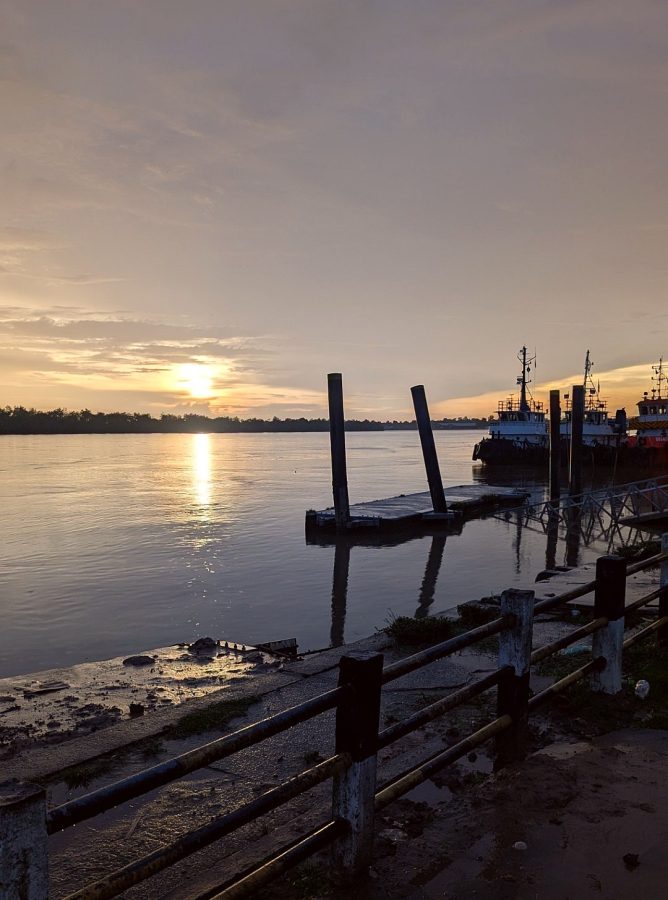
THE EVOLUTION OF A MORE MODERN SIBU
By the early 20th century, Sibu had become an important hub for the timber trade. The dense forests upriver supplied an industry that powered the region’s growth for decades. At its height, large timber companies operated sawmills, tugboats, and barges, all contributing to the town’s reputation as a bustling commercial centre. Though the industry has since declined (and Sarawak’s forests have seen been horribly depleted, it cannot be ignored), timber’s legacy can be seen in Sibu’s early wealth, its riverfront warehouses, and the generations of workers who built their lives around the trade.
These days, one of the town’s clearest landmarks is the multi-storey Sibu Central Market — said to be the largest indoor market in not only Sarawak, but in the whole of Malaysia — which reflects both its heritage and its continuing role as a regional hub. The ground floor is a sprawling wet and dry market, piled high with jungle produce, fresh seafood from the Rajang, live poultry, and native delicacies, while the upper level houses a hawker centre, numerous small shops, and clothing and sundry stalls.
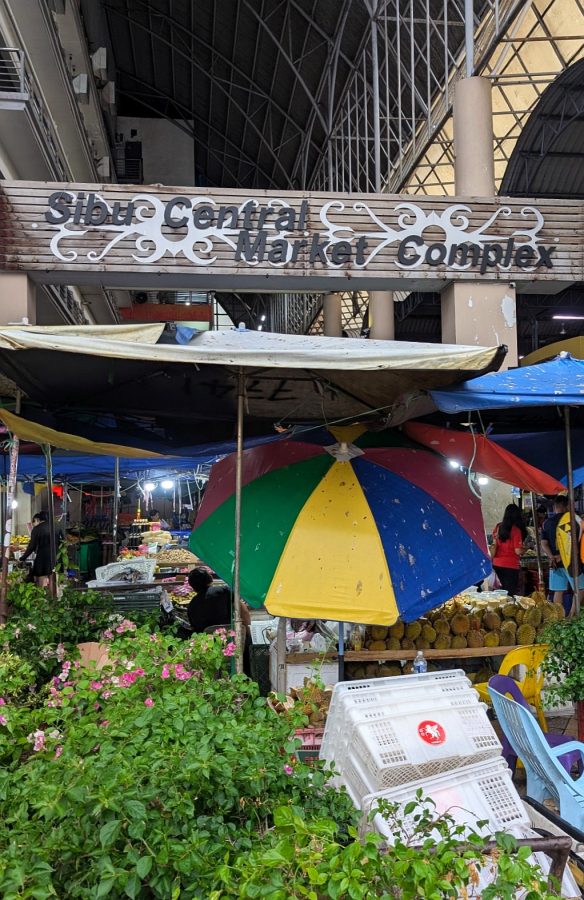
Hundreds of vendors converge here on any given day, including traders from upriver Iban longhouses, Melanau fishing villages, and Chinese farming communities, making the market a living snapshot of central Sarawak’s diversity. The market’s scale and variety make it an essential first stop for visitors — not only for shopping, but for the kind of local encounters and flavours that define Sibu. From jungle ferns and wild honey to homemade tuak and freshwater fish pulled straight from the Rajang, the market is a reminder that Sibu’s fortunes have always been tied to its surrounding landscapes and diverse communities.
Culturally, Sibu stands at a crossroads between its many influences. The Fuzhou heritage is impossible to miss, from the distinctive red-and-white architecture of the Tua Pek Kong Temple to the popularity of kampua mee, kompia, and other dishes introduced by early migrants. The Iban presence is equally important, particularly as Sibu serves as a gateway to longhouse regions upriver. Festivals, music, and handicrafts from these communities enrich the town’s cultural mix, offering visitors a glimpse into traditions that have endured for generations.
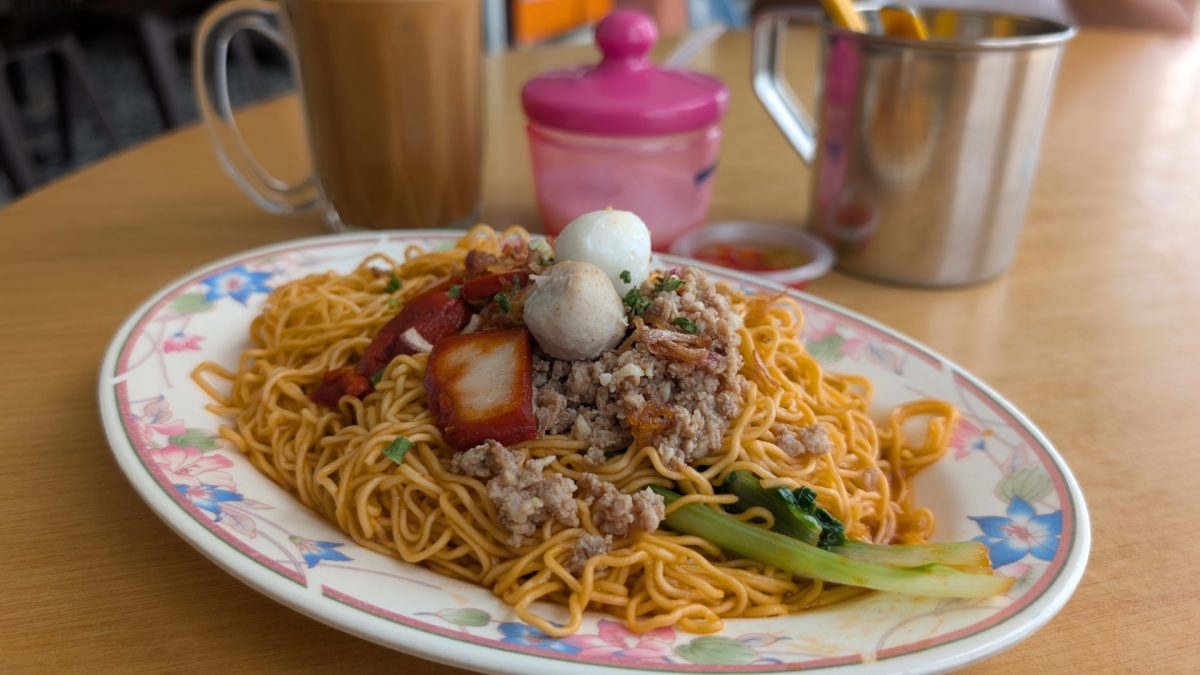
Another chapter of Sibu’s history unfolded during World War II. The Japanese occupation left deep scars in Sarawak, and Sibu was no exception. Stories of resistance, hardship, and survival from this period still resonate, growing ever quieter as the years march by, but still preserved in family histories and memorials. After the war, Sibu recovered gradually, rebuilding its port facilities, expanding trade links, and eventually emerging as one of central Sarawak’s most important towns.

VISITING SIBU: STAY AND PLAY
In recent decades, Sibu has worked to shift its image from an industrial centre to a more visitor-friendly destination. The development of the riverfront promenade, the completion of the Rajang Esplanade, and efforts to promote cultural tourism reflect an ongoing transformation. Museums, heritage centres, and restored shophouses provide context for newcomers, linking modern attractions with the town’s layered past.

Staying at the Win Hotel as we did, almost everything we wanted to see was within walking distance. We thoroughly enjoyed walking along the river and its port area and exploring the beautiful compact grounds of the historic Tua Pek Kong Temple with its lovely seven-storey pagoda. We were impressed by the cleanliness of the streets and sidewalks, the nice central padang that was buzzing with activity on the weekend, and all the nice buildings and shops — some of them obviously quite new, some still boasting their impressive heritage.

Yet despite these upgrades, Sibu has retained a grounded, practical personality. Locals are known for their straightforward manner, and the pace feels different from Sarawak’s coastal cities. For many travellers, including us, this authenticity is precisely what makes the town appealing. In Sibu, the charm comes not from flashy attractions but from the daily rhythms of a community shaped by migration, labour, and resilience.
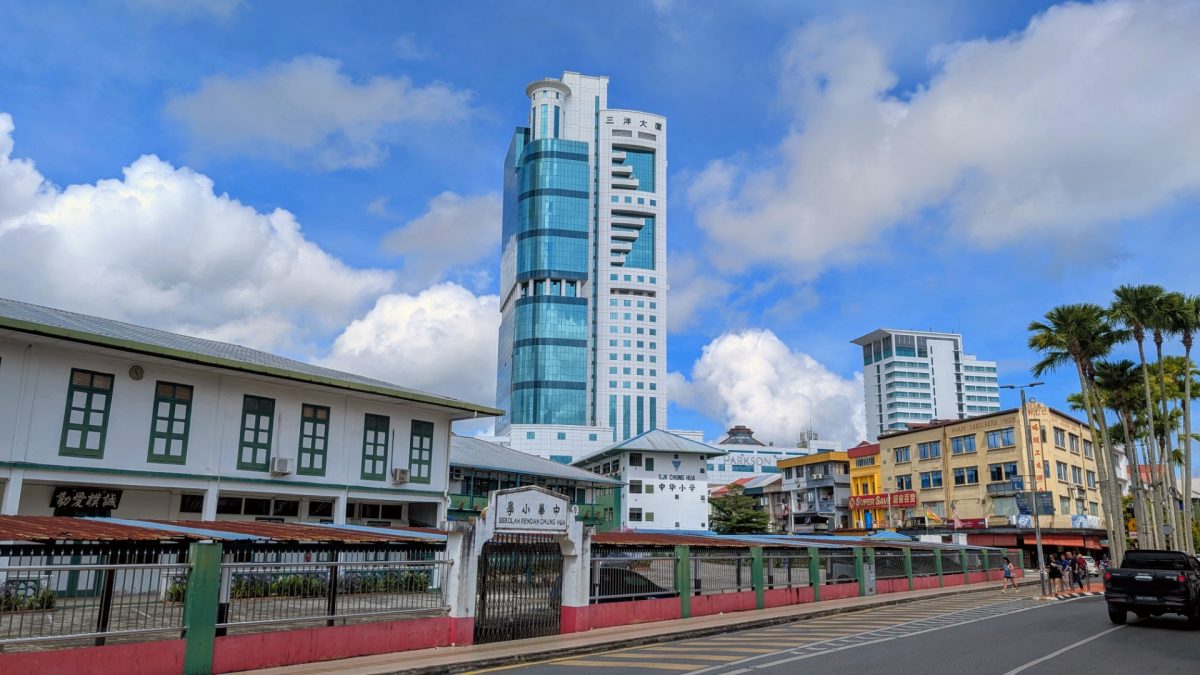
When we visited, we were happy to meet the town on its own terms. We had breakfast each morning at a café near the hotel (which Win Hotel engages with to provide value-for-money breakfasts for its guests as an option), then wandered along the river promenade to work off some of the calories. After a brief rest, we walked to the Central Market, a little over a kilometre from the hotel. We bought a few things, but mostly just took in the atmosphere, and chatted with some of the vendors. We quickly learned that while the market as a whole carries on throughout the afternoon, quite a few of the individual stalls are closed by 12 noon. And that doesn’t mean they start shutting down at that time, it means if you go at noon, you will find the stall has been washed down, closed, wrapped in tarp, secured, and abandoned. So for the best choices, plan your market visits for midmorning.
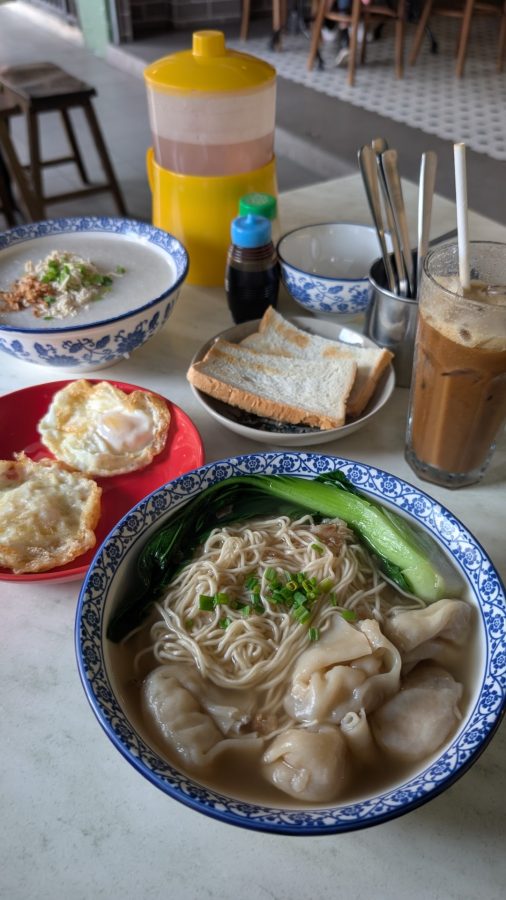
Sibu’s market is a wondrous assault on your senses. Everything from piles of seafood, fruits and vegetables, and sugarcane juice to fresh roasted coffee beans (whose stall is closed by 11am), wild ferns, kek lapis in a bewildering array of variants, and even (to my own minor horror) live chickens and ducks, wrapped in newspapers like little burritos and secured with raffia ties. They seemed very calm and even comfortable in their little newsprint cocoons, strangely enough. I was assured they were not lined up waiting to be butchered on the spot, but rather to be sold to people who would take them home to… well, be butchered there, almost certainly. A bit of research suggests this practice is fairly common in rural Sarawak (and Sibu’s Central Market is apparently well-known for its “live chicken burritos”), as it gives customers the assurance of obvious freshness and health. And I learned that wrapping and restraining the chickens induces calm, and they become quite subdued once rolled up in the newspaper so they can’t flap around. It’s supposedly more humane than jamming them into small cages where they can be injured. It was admittedly a bit of a bizarre sight, but all in a typical day’s trip to Sibu’s market.
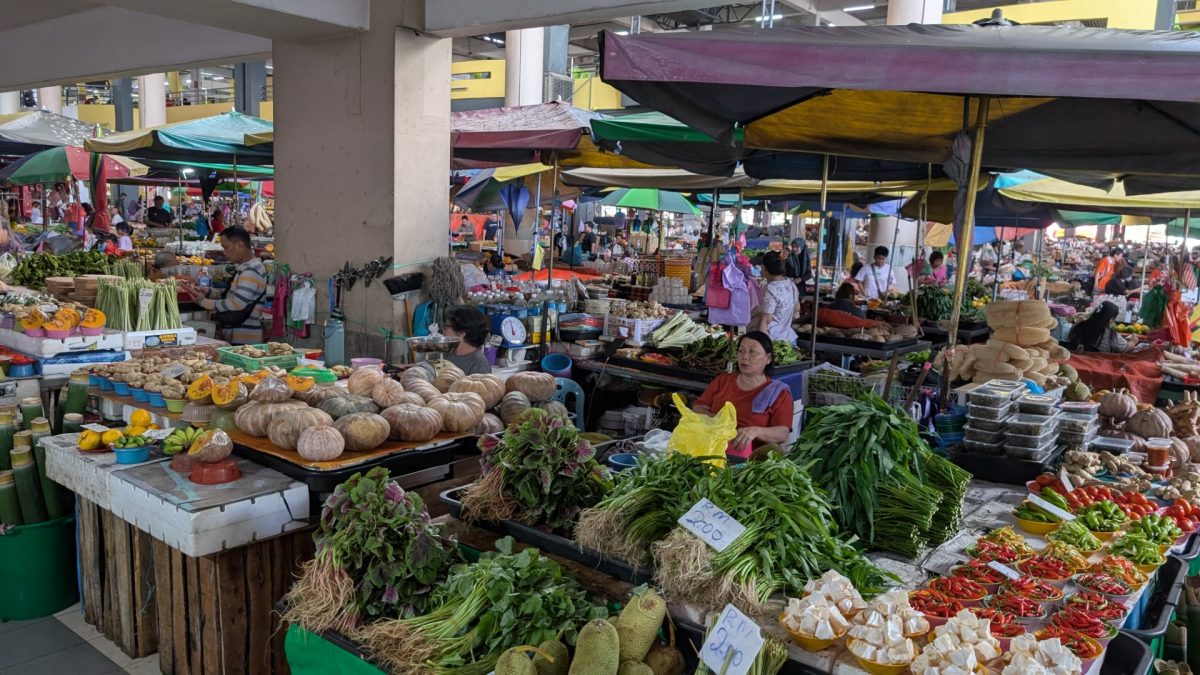
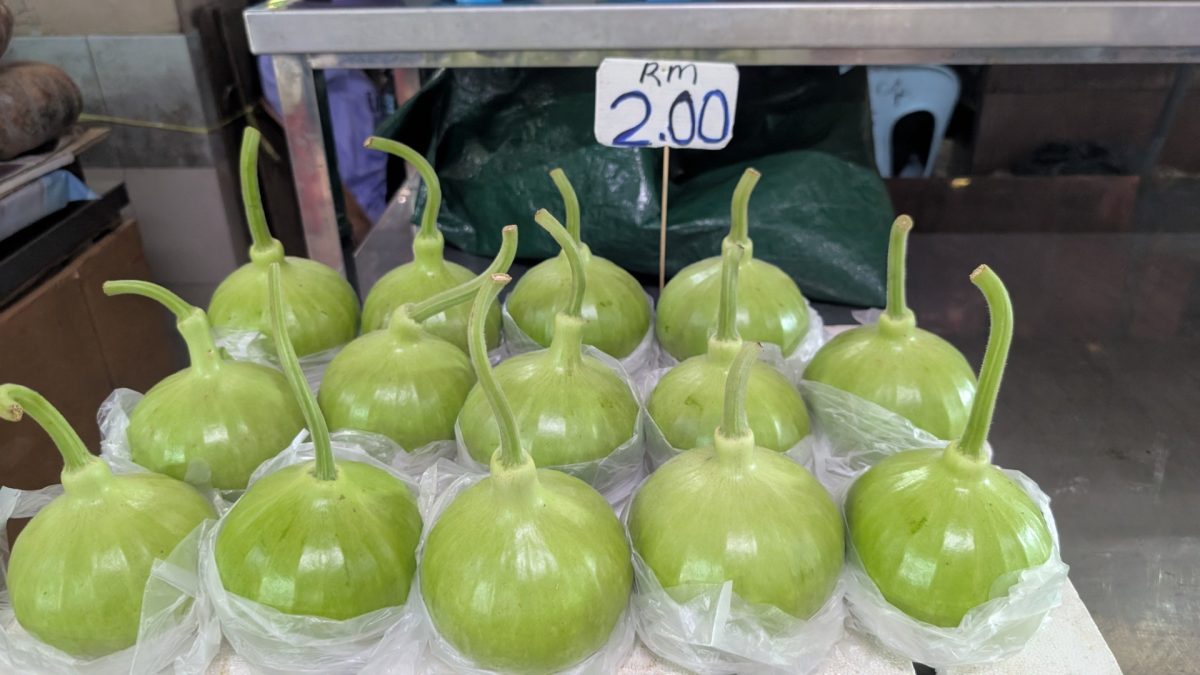
Just beside Sibu Central Market sits the IPSS building, a surprisingly handy stop for visitors who want to squeeze in a bit of sport between sightseeing and food hunting. The facility houses both badminton and pickleball courts on separate floors, with the pickleball courts gaining particular traction among local players in recent years. It’s a clean, well-kept space with steady usage throughout the day, and walk-ins can usually find a slot during off-peak hours.
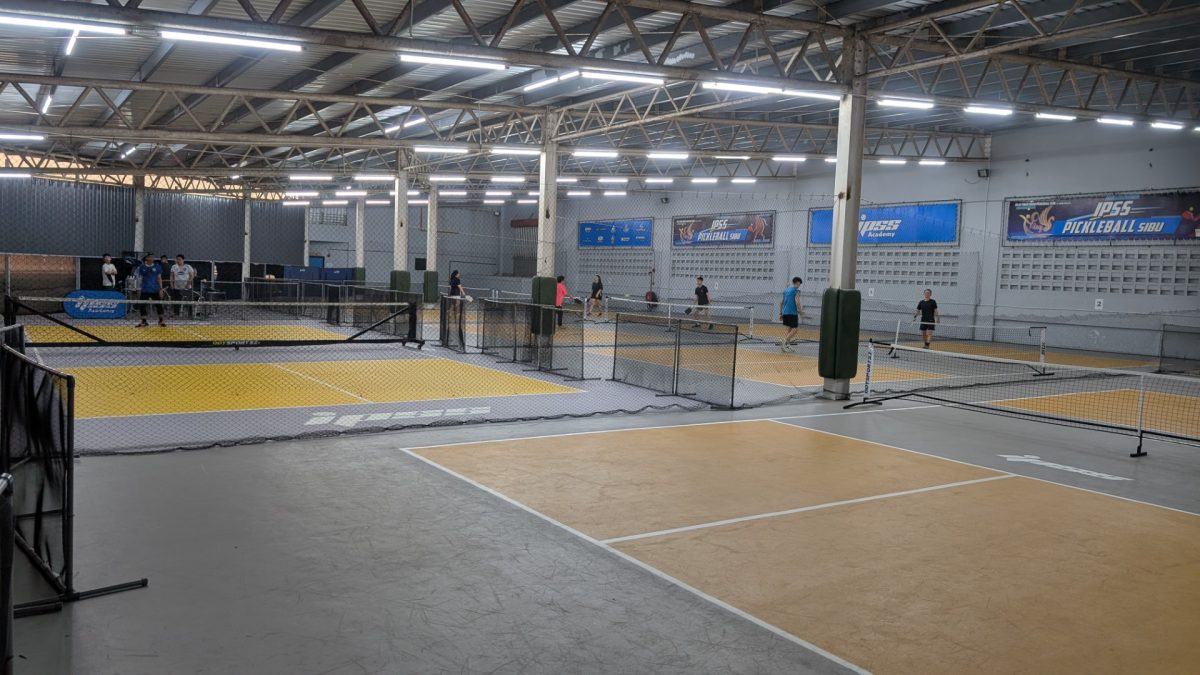
For travellers staying near the waterfront or exploring the market, it’s one of the most convenient places in town to play, and we enjoyed using the space. We found it easy to book by scanning the QR code onsite (or you can book ahead using their online portal). At the time of our visit, it was RM20 per hour, and you’ll need to have your own paddles and balls (although there is a vending machine that sells both cans of 100 Plus and spare balls).
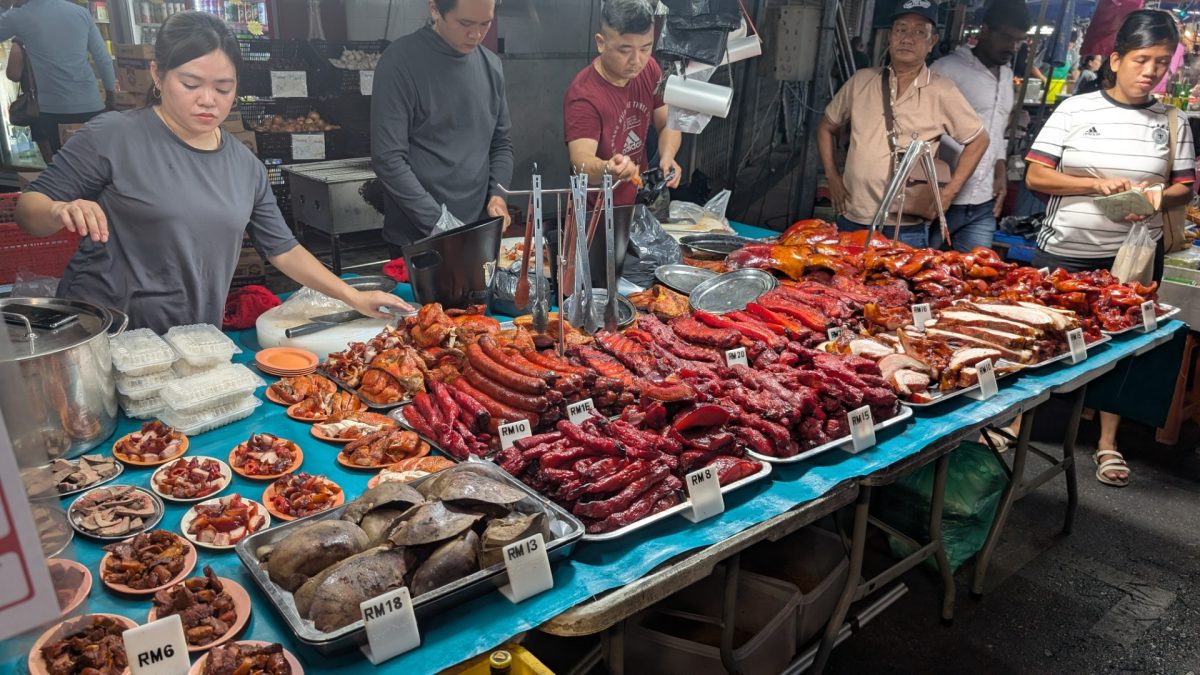
Dining around Sibu is always an adventure. We made several visits to the night market, which is close to both our hotel and the far larger Central Market. During the day, the area is just a cluster of streets and parking bays, but from about 4pm onward, it transforms into a nightly market that, depending on the evening, ranges from pretty good to simply amazing. Pork and beer feature quite liberally, but there are also plenty of options for those who don’t consume pork or alcohol.
Our favourites included the delightful Fuzhou staple, kompia buns, stuffed with BBQ minced pork or chicken, and the Sibu version of takoyaki made fresh on the spot with local squid rather than octopus. Absolutely delicious!
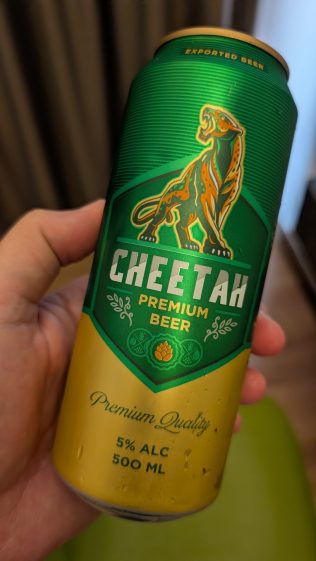
And the beers, many of which are brands unfamiliar to those of us from the Peninsula, are seriously affordable. We routinely bought 500-ml cans of ice-cold Cheetah beer, a very agreeable lager from Vietnam, for just RM4.00. The market, like pretty much all such pasar malams, offers no places to sit, so you either snack while you walk around, or buy what you want and take away. In addition to all the food and drink on offer, the night market also has a number of stalls selling all manner of toys, clothing, various sundries, and even some household goods.
Mere days before our visit, Sibu’s city council had just completed the installation of a number of colourful, decorative LED lights, affixed to lampposts around the market area. They were easy to notice and we thought they were a very nice touch, only learning later that they had just been newly installed!
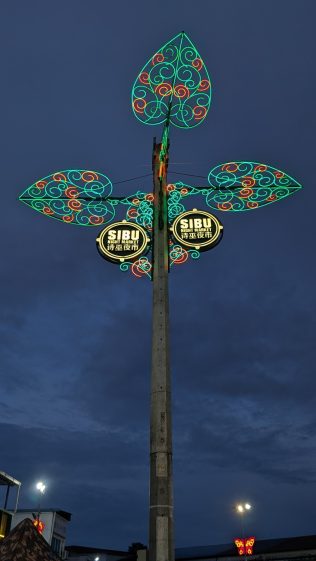
LOCAL FLAVOURS
On our final night, we somewhat optimistically turned to ChatGPT to suggest a place to eat, prompting for a restaurant that was nice, but not necessarily fancy, moderate prices, focused on local cuisine, and no more than about 5 km from the hotel. (Grab fares in Sibu tend to be very inexpensive, but we were hungry and didn’t want a long journey!) We got a list of several options from the AI chatbot, and chose a place called Mak Borneo — exactly 5 km away — and to say this was a good suggestion would be a huge understatement. We loved this place. Authentic, full of character, great vibes, friendly service, and outstanding Dayak cuisine (with no shortage of tuak and langkau, of course). We barely managed to get a table, as it was a Saturday night and the place was hopping.
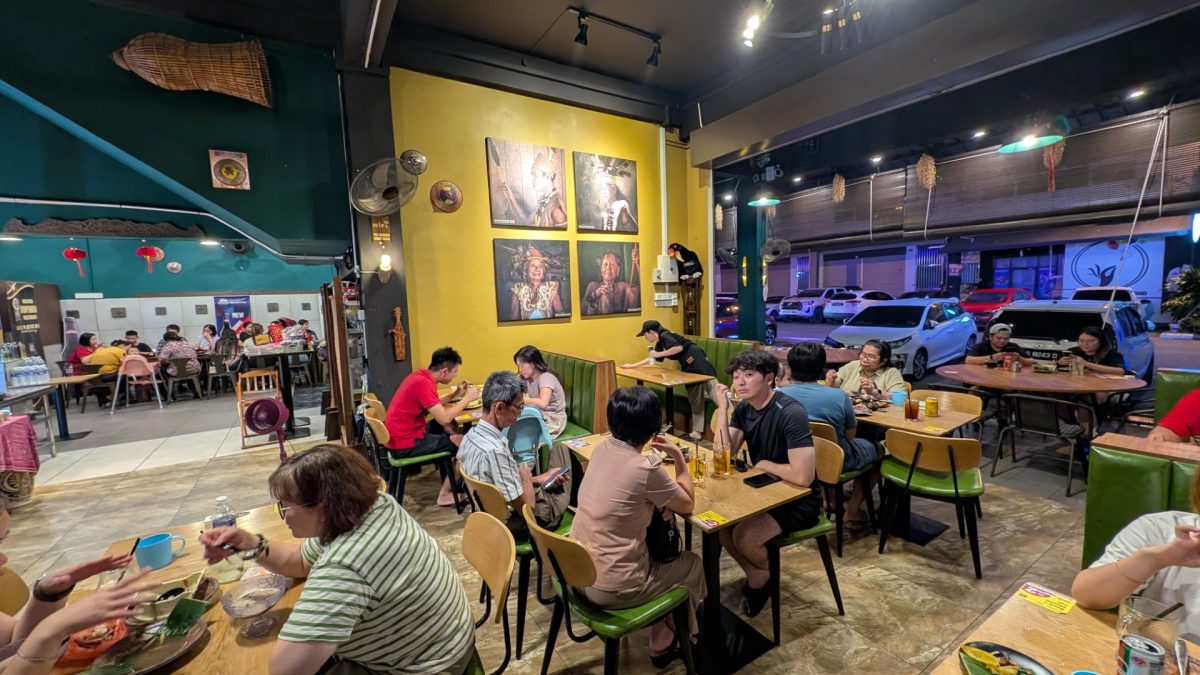
We can easily recommend any of the fish dishes (the tilapia was amazing), the delicious ayam goreng bunga kecalak (a chicken dish), and the midin langkau, which was superb, the popular local fern cooked in langkau, Sarawak’s famed distilled rice spirit. We enjoyed Mak Borneo’s house-made tuak, the beloved rice wine of the state, along with the traditional spirit drink, pamoga. This is a highly recommended place to put on your dining list if you’re ever in Sibu.


WHERE PAST IS PROLOGUE
Today, Sibu continues to serve as a gateway to the wild interior of Malaysia’s largest state, Sarawak. Boats still travel upriver to Kapit and beyond, following routes that have existed for generations. Longhouses remain active social hubs, jungles stretch for miles, and the Rajang River continues to act as a highway for goods and people. For travellers planning to explore central Sarawak, Sibu offers both a convenient starting point and an engaging introduction to the region’s history. We found much to enjoy there, and surprisingly enough, plenty to see and do, as well!
Understanding Sibu’s past provides a richer appreciation for what the town offers today. Its heritage is not just a backdrop but a living force that still shapes its food, festivals, architecture, and community life. Whether wandering through the vast Central Market, sampling Fuzhou snacks, enjoying the cuisines of indigenous tribes, or simply walking along the promenade and watching boats on the river at sunset, visitors will find that the town’s character is deeply tied to the journey that brought it here.

TRAVEL FILE
Getting There
Fly with Batik Air from KLIA Terminal 1 (KUL) to Sibu Airport (SBW), about 25 minutes away from the city. The airport got a major upgrade in 2012, and is an impressive terminal for such a small city. Batik flies between KL and Sibu four times a week, and operates its 737 jet aircraft on the route, giving travellers a choice of economy or business class cabins. The flight is about two hours.

Sarawak controls its own borders and does so separately from the rest of Malaysia, so all passengers — even Malaysian citizens — will need to clear immigration upon arrival and departure. A passport is the easiest and fastest option for Malaysians, but if a MyKad IC is used instead, immigration officials will issue a form called a Document In Lieu of Internal Travel Document (IMM 114), which serves as a short-term social or business visit pass. A passport is required for non-Malaysians.
Stay
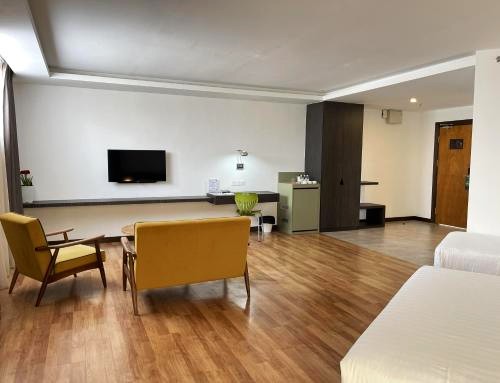
We chose the three-star Win Hotel, located conveniently in town near the confluence of the Rajang and Igan Rivers. Friendly staff, spacious and clean rooms, affordable rates, and an optional breakfast that’s to die for (when we visited, breakfasts were served at the nearby Little Penang Café, and the portions of everything were both huge and delicious).
To our knowledge, there are no international hotel chains in Sibu, so the goal is to find a good local brand and settle in. We like the location of the Win Hotel, with nearly everything we wanted to see and do within reasonable walking distance. There are numerous shops, convenience stores, cafés, and restaurants right in the immediate vicinity, plus a nice park and easy access to the river promenade just steps away. The hotel offers 90 rooms over seven floors, all surrounding a bright, spacious atrium which boasts a comfortable seating area (and even a small art installation when we were visiting) located on the second floor.
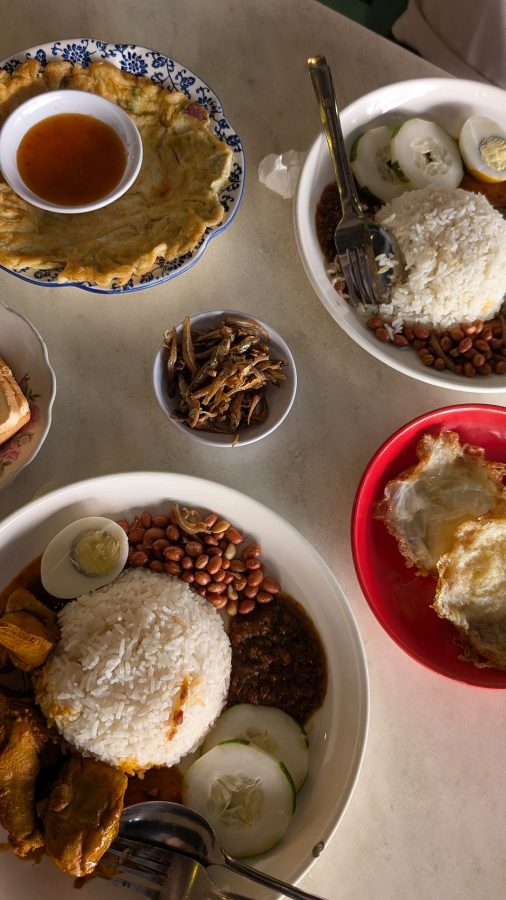
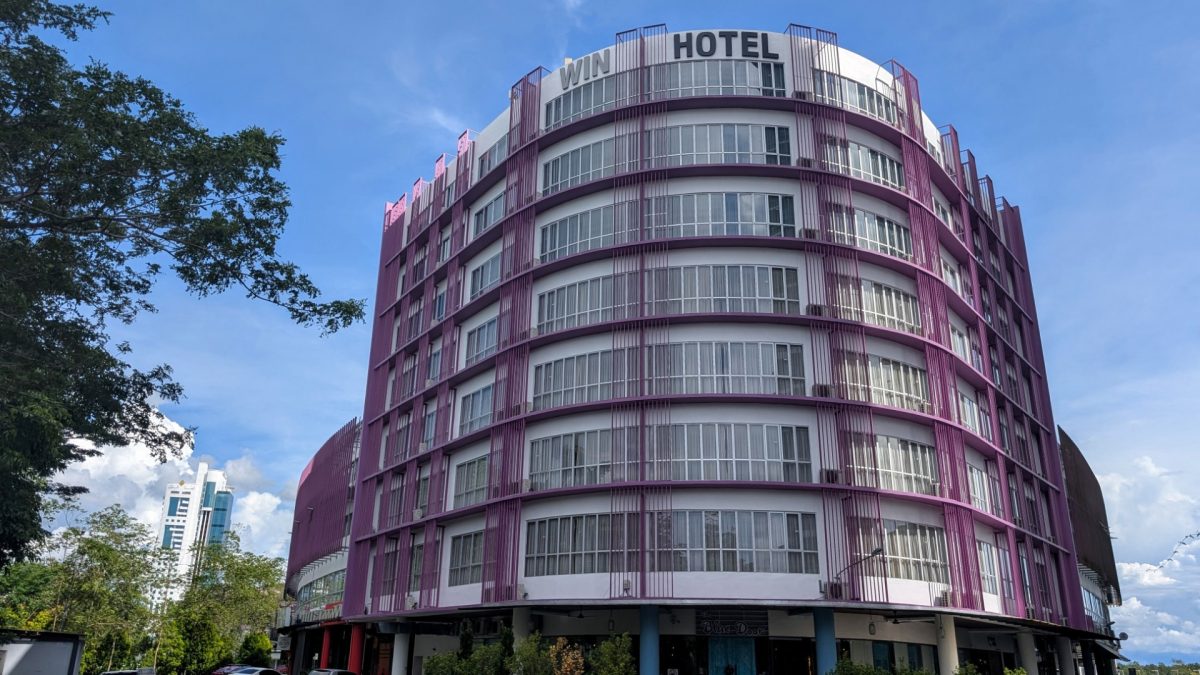
Eat and Drink

Definitely make plans to visit the Sibu Night Market at least once. Indulge in a wide range of local treats, pick up some cheap beer if you like, and enjoy the friendly atmosphere. The market is open every night, and it’s best to go between the hours of 6 and 9pm, although many stalls are open by 5pm. There are also a few shops in the area around the market (grocery stores, convenience stores, etc.); though many close early, a few will still be open until around 8pm.
Sarawak laksa and kolo mee are justifiably famous throughout the state, and you can usually find one or the other at most sizeable hawker centres. Another Sibu favourite is kampua (not to be confused with the kompia buns), a tasty dry noodle dish made with thin egg noodles and topped with a variety of sliced and minced meats and spring onions. You’ll be hard-pressed to find a place charging more than about RM5 or RM6 for this beloved local dish.
Finally, set aside a night to enjoy a meal at Mak Borneo Rainforest Cuisine, which specializes in indigenous Dayak cuisine. (We also spotted some Melanau and Iban dishes on their extensive menu, too.) Portions are reasonably generous, and prices are moderate; expect to pay about RM30-45 per person, with the cost per person lower if you have more people to share the food.
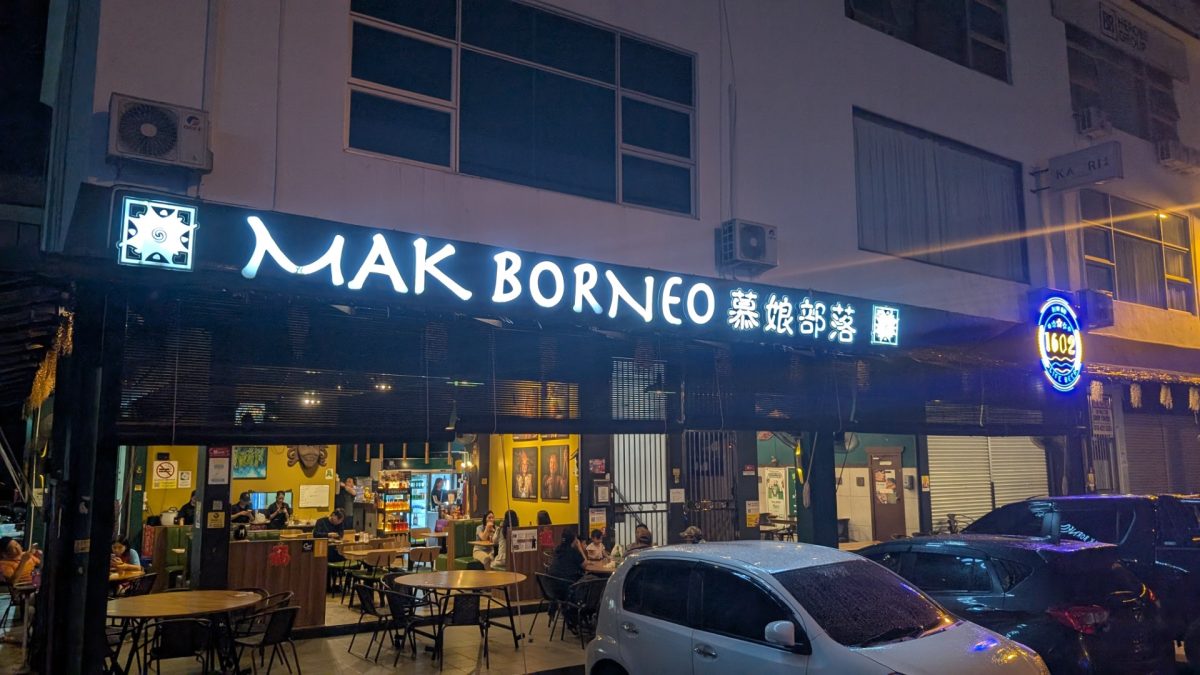
It’s a vibrant, authentic dining experience, with a wide range of dishes on offer, much of it which will likely be unfamiliar. The staff are friendly and helpful, though, so have an adventurous spirit and jump right in. Wash it all down with cold beers, traditional pamoga, local tuak and langkau, or even Dayak stout! There are dozens and dozens of non-alcoholic drinks as well (no joke, we counted at least 56 options), from soft drinks and teas to shaved ice, smoothies, and fruit juices.
